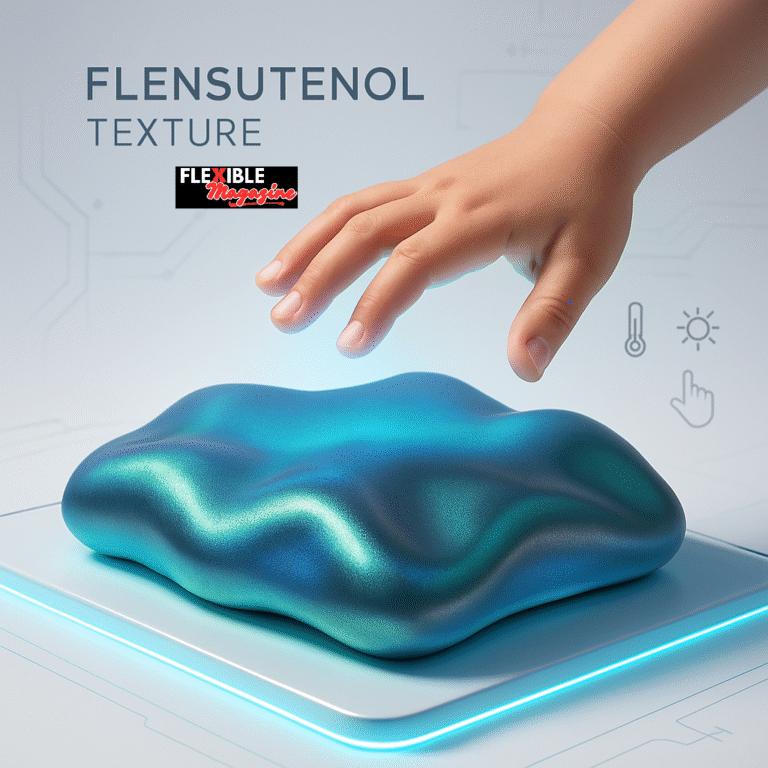When it comes to the world of materials, coatings, and surface sciences, one of the emerging terms that has gained interest is flensutenol texture. Although the term might sound highly technical, it relates to the way certain materials are developed, modified, or understood in industrial, architectural, or even medical applications. The concept of flensutenol texture combines innovation, durability, surface quality, and design adaptability, making it an important subject for researchers, designers, and manufacturers.
In this article, we will explore flensutenol texture in detail. We will discuss its definition, history, applications, benefits, challenges, and its role in industries ranging from construction to healthcare. By the end of this comprehensive guide, you will have a clear understanding of what flensutenol texture means and why it has become an important keyword in both science and design.
What is Flensutenol Texture?
Flensutenol texture refers to the structural and tactile qualities of a specific type of engineered surface or material. The term combines two aspects:
- Flensutenol – a conceptual or scientific material category linked to advanced surface modifications.
- Texture – the physical and visual pattern of a surface, including smoothness, roughness, granularity, and feel.
Together, they represent the study and creation of surfaces with specialized finishes that are designed for functional or aesthetic purposes. Unlike ordinary materials, flensutenol surfaces are tailored for enhanced resistance, controlled grip, reflective properties, or sensory design.
The Origins of Flensutenol Texture
The concept of flensutenol texture originates from the broader study of material science and industrial chemistry. Since the mid-20th century, industries have sought to improve materials beyond their basic properties. Scientists began exploring:
- How texture impacts strength.
- How surfaces can reduce friction.
- How coatings can improve longevity.
- How aesthetic design influences human interaction.
With advances in nanotechnology, polymers, and composite engineering, researchers discovered new ways to modify surfaces on microscopic levels. Flensutenol texture thus emerged as a field where durability meets design.
Characteristics of Flensutenol Texture
Several key qualities define flensutenol texture.
1. Durability
Surfaces designed under flensutenol texture principles are resistant to scratches, heat, moisture, and chemical corrosion.
2. Aesthetic Appeal
Textures can range from matte and smooth to granular and patterned, offering flexibility in design.
3. Functional Performance
Flensutenol textures often improve grip, anti-slip qualities, or reflectivity, making them suitable for flooring, medical equipment, and even electronics.
4. Eco-Compatibility
New research focuses on sustainable flensutenol textures, which are developed with environmentally friendly materials.
5. Sensory Interaction
The tactile feeling of flensutenol textures is often engineered to influence how users perceive comfort, warmth, or safety.
Applications of Flensutenol Texture
The real-world uses of flensutenol texture are vast.
1. Architecture and Interior Design
- Wall finishes with controlled reflection.
- Flooring materials with anti-slip textures.
- Decorative panels that combine durability with luxury.
2. Healthcare and Medical Equipment
- Medical tools requiring hygienic, easy-to-clean surfaces.
- Prosthetics and implants with improved tactile qualities.
- Hospital flooring designed for safety and sterility.
3. Consumer Goods
- Smartphones with scratch-resistant back panels.
- Kitchen appliances with fingerprint-resistant coatings.
- Furniture materials that blend resilience with beauty.
4. Automotive Industry
- Dashboard finishes with glare control.
- Car seats with enhanced comfort through surface design.
- Protective coatings for external body parts.
5. Industrial Manufacturing
- Machinery with surfaces designed to withstand heavy wear.
- Pipes and equipment resistant to rust and chemical erosion.
- Packaging with textures for branding and usability.
Benefits of Flensutenol Texture
1. Longevity
Materials designed with flensutenol texture’s last longer and resist everyday damage.
2. Enhanced User Experience
The tactile sensation improves comfort, making products more appealing.
3. Safety
Anti-slip and anti-glare features enhance user safety in various environments.
4. Sustainability
Eco-friendly innovations reduce environmental impact.
5. Market Appeal
Manufacturers benefit from unique textures that differentiate products.
Challenges in Flensutenol Texture Development
Despite its benefits, there are challenges:
- High Production Costs – Advanced materials are expensive.
- Complex Manufacturing – Requires specialized equipment.
- Limited Awareness – Many industries are not yet familiar with flensutenol innovations.
- Scalability Issues – Some textures are difficult to reproduce on a mass scale.
The Future of Flensutenol Texture
With technological advancements, the future of flensutenol texture looks promising. Trends include:
- Smart Textures – Surfaces that change properties with temperature or pressure.
- Nanostructured Surfaces – Ultra-thin coatings with unique qualities.
- Eco-Smart Materials – Fully recyclable and biodegradable flensutenol products.
- Virtual Texture Design – Digital simulations for texture planning before manufacturing.
Flensutenol Texture in Everyday Life
Even without realizing it, people encounter flensutenol textures daily:
- The smooth back of a smartphone.
- The non-slip flooring in a shopping mall.
- The resistant coating on a kitchen countertop.
- The fabric finish on a modern car seat.
Conclusion
Flensutenol texture is not just a scientific concept but a practical innovation that affects multiple aspects of our daily lives. It merges design, science, and usability, creating surfaces that are stronger, safer, and more beautiful. As industries continue to embrace advanced material technologies, flensutenol texture’s will become even more prominent.
FAQs
Q1. What is flensutenol texture‘s?
Flensutenol texture’s refers to engineered surface designs that enhance durability, usability, and aesthetic appeal.
Q2. Where is flensutenol texture’s commonly used?
It is widely used in architecture, healthcare, consumer electronics, automotive design, and industrial manufacturing.
Q3. Is flensutenol texture’s eco-friendly?
Yes, many flensutenol materials are being developed with sustainability in mind, focusing on recyclable and biodegradable options.
Q4. What makes flensutenol texture‘s different from normal surfaces?
Unlike standard materials, flensutenol textures are scientifically engineered to improve tactile quality, resistance, and safety.
Q5. Will flensutenol texture‘s become more common in the future?
Yes, as technology advances, industries will increasingly adopt flensutenol textures due to their functional and design benefits.


